#computinghistory
Explore tagged Tumblr posts
Text
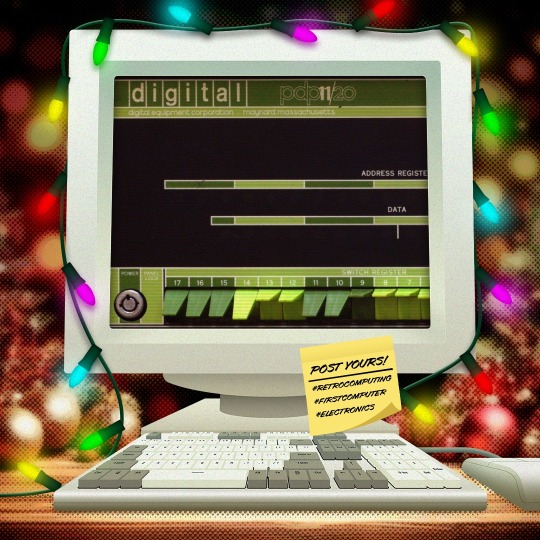
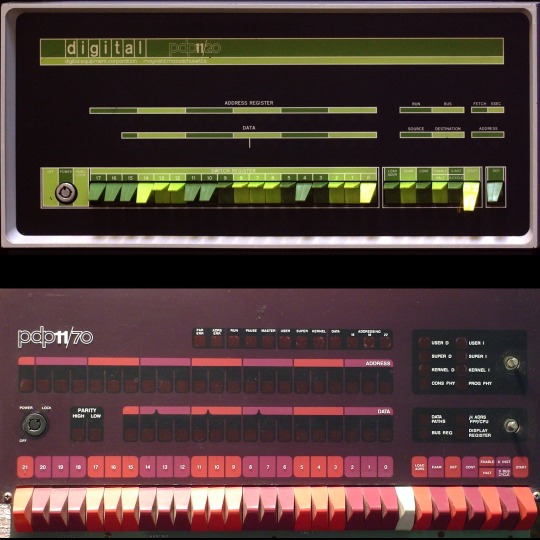
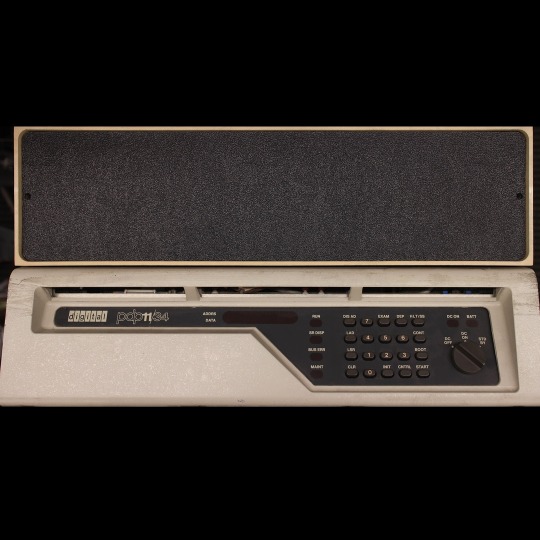
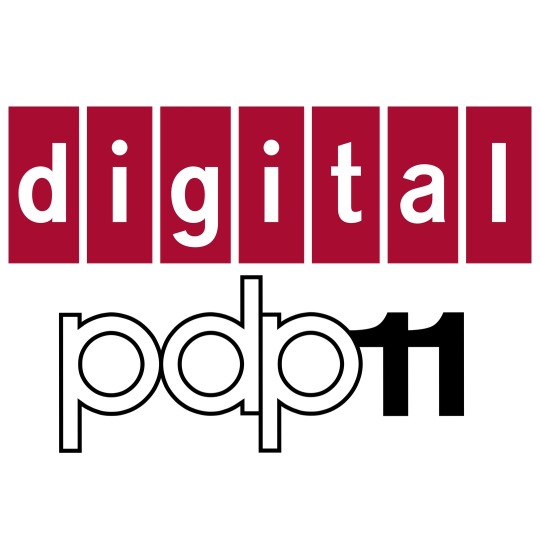

🎄💾🗓️ Day 4: Retrocomputing Advent Calendar - The DEC PDP-11! 🎄💾🗓️
Released by Digital Equipment Corporation in 1970, the PDP-11 was a 16-bit minicomputer known for its orthogonal instruction set, allowing flexible and efficient programming. It introduced a Unibus architecture, which streamlined data communication and helped revolutionize computer design, making hardware design more modular and scalable. The PDP-11 was important in developing operating systems, including the early versions of UNIX. The PDP-11 was the hardware foundation for developing the C programming language and early UNIX systems. It supported multiple operating systems like RT-11, RSX-11, and UNIX, which directly shaped modern OS design principles. With over 600,000 units sold, the PDP-11 is celebrated as one of its era's most versatile and influential "minicomputers".
Check out the wikipedia page for some great history, photos (pictured here), and more -
And here's a story from Adafruit team member, Bill!
The DEC PDP-11 was the one of the first computers I ever programmed. That program was 'written' with a soldering iron.
I was an art student at the time, but spending most of my time in the engineering labs. There was a PDP-11-34 in the automation lab connected to an X-ray spectroscopy machine. Starting up the machine required toggling in a bootstrap loader via the front panel. This was a tedious process. So we ordered a diode-array boot ROM which had enough space to program 32 sixteen bit instructions.
Each instruction in the boot sequence needed to be broken down into binary (very straightforward with the PDP-11 instruction set). For each binary '1', a diode needed to be soldered into the array. The space was left empty for each '0'. 32 sixteen bit instructions was more than sufficient to load a secondary bootstrap from the floppy disk to launch the RT-11 operating system. So now it was possible to boot the system with just the push of a button.
I worked with a number DEC PDP-11/LSI-11 systems over the years. I still keep an LSI-11-23 system around for sentimental reasons.
Have first computer memories? Post’em up in the comments, or post yours on socialz’ and tag them #firstcomputer #retrocomputing – See you back here tomorrow!
#dec#pdp11#retrocomputing#adventcalendar#minicomputer#unixhistory#cprogramming#computinghistory#vintagecomputers#modulardesign#scalablehardware#digitalcorporation#engineeringlabs#programmingroots#oldschooltech#diodearray#bootstraploader#firstcomputer#retrotech#nerdlife
290 notes
·
View notes
Text

Commodore 2001 series The Commodore PET is a line of personal computers produced starting in 1977 by Commodore International. A single all-in-one case combines a MOS Technology 6502 microprocessor, Commodore BASIC in read-only memory, keyboard, monochrome monitor, and, in early models, a cassette deck.
Source: Wikipedia
#retrotech#s#retrocomputing#retrocomputer#retropc#retro#vintagecomputing#retrotechnology#vintagecomputer#vintagetech#vintagepc#oldcomputer#retrogaming#oldcomputers#computer#computinghistory#vintage#technology#retrogamer#computers#vintagetechnology#oldtechnology#vintagehardware#nostalgia#retrocomputers#oldtech#retrohardware#bit
302 notes
·
View notes
Text



On June 14, from the stars of our flag to the stars of literature and the stars of technology, we celebrate the threads that weave our nation’s rich tapestry. 🇺🇸📖💻
Follow👉 @biographiness
#Biographiness#Biograghines#TodayInHistory#TIH#OnThisDay#OTD#HistoryEvents#DailyHistory#HistoryFacts#June14#History#FlagDay#HarrietBeecherStowe#UNIVAC#AmericanPride#LiteraryGreats#TechMilestones#NationalFlag#Storytelling#ComputingHistory#InnovationAnniversary
2 notes
·
View notes
Text
Exploring the Evolution of Generations of Computers
The evolution of computers is categorized into five generations, each representing key technological advancements. These include the use of vacuum tubes, transistors, integrated circuits, microprocessors, and now, cutting-edge AI and quantum computing. Each generation has contributed to the speed, efficiency, and capabilities of modern computers Read More..

0 notes
Text

rePlayer 0.16.9 - another multi-formats music player
#commodore#retro#amiga#c64#vintage#classic#retrogaming#videogames#cbm#8bit#music#player#windows#github#Retrocomputing#Altcomputing#OldComputers#RetroTech#ComputingHistory#VintageComputing#ComputerArchaeology
1 note
·
View note
Text
Why is the First Windows Drive Always Called C?
Ever wondered why your primary drive in Windows is always labeled as "C"? 🤔 Let's dive into a bit of tech history!
Back in the early days of personal computing, operating systems like MS-DOS were designed to support floppy drives, which were labeled as "A" and "B". When hard drives became more common, they were assigned the next available letter, which was "C". This convention has stuck around ever since, even as technology has evolved.

#TechTrivia#Windows#ComputingHistory#FunFacts#genuinelicense#windows11pro#windows10pro#softwarelicense#windows 10#guaranteedlicence#genuinelicence
0 notes
Text


40 Years Apart (1984/2024)
#iMac#Apple#Macintosh#TechEvolution#ComputingHistory#AppleAnniversary#1984Mac#2024iMac#Innovation#AppleDesign#SteveJobs#RetroTech#ModernComputing#TechMilestones#MacHistory#AppleInnovation#40YearsOfiMac#PersonalComputing#VintageTech#FutureOfComputing#today on tumblr
1 note
·
View note
Text
#DataScience#MachineLearning#Statistics#AI#BigData#NetflixPrize#AlphaGo#DeepLearning#AIResearch#DataAnalysis#TechnologyEvolution#PredictiveAnalytics#ComputingHistory#DataScienceFuture#EthicalAI
1 note
·
View note
Text
youtube
Intel’s Shocking Start. Discover how Intel’s trailblazing microprocessor technology—from the iconic 4004 to today’s high-performance chips—revolutionized personal computing and shaped the modern digital world. https://www.youtube.com/channel/UC3o4B5eoAcewBjxvaeC5Rxg?sub_confirmation=1 Intel’s story began in 1968 when founders Robert Noyce and Gordon Moore set out to push the boundaries of semiconductor technology. Their ambition led to the creation of the Intel 4004—the world’s first commercial microprocessor—in 1971. This groundbreaking chip, roughly the size of a fingernail, marked the beginning of a new era, enabling personal computers and ushering in a revolution in how we interact with machines. Throughout the 1970s and 1980s, Intel built on this initial success. Their research and development efforts fueled continuous improvements in processing power, transforming clunky, room-sized systems into sleek home PCs. Strategic partnerships with companies like Microsoft made it possible to bring personal computing to the average consumer. The phrase “Intel Inside” became a widely recognized promise of performance and reliability. Fast forward to the modern day, and Intel’s processors power everything from everyday laptops to massive cloud data centers. The company’s dedication to innovation hasn’t slowed; each new processor line offers gains in speed, energy efficiency, and artificial intelligence capabilities. Whether you’re talking about gaming rigs, business workstations, or server farms, Intel’s influence is everywhere. Looking to the future, Intel remains focused on cutting-edge computing. With emerging tech like quantum computing, advanced AI acceleration, and next-gen networking on the horizon, the company shows no sign of losing its pioneering spirit. As technology continues to evolve, Intel’s legacy of innovation offers a glimpse of what’s to come: faster, smarter, and more interconnected devices that shape our digital world. 📂 For The Latest Stories on luxury travel, getaways goods, the rich, companies, Top 10’s, biographies, Lavish History, news, and more 📂 https://www.youtube.com/@Lavishangle 🎉 For business enquires contact us at full4sog (@) gmail dot com 💬 Don't forget to leave your thoughts in the comments below. We love hearing from you! 😍 and hit that bell to stay updated on all new videos we release. #lavishgetaways #thelavishandaffluentangle #thelavish&affluentangle #tlaa #shorts #shortsvideo #shortsbeta #viralshorts #viral #viralreels #youtubeshorts #viralyoutubeshorts #Intel #Microprocessor #Intel4004 #SemiconductorTechnology #ComputerRevolution #PCInnovation #TechIndustry #ResearchAndDevelopment #ProcessingPower #DigitalWorld #IntelInside #FutureOfComputing #QuantumComputing #AdvancedAI #HighPerformanceChips #MicrosoftPartnership #NextGenNetworking #ComputingHistory #EngineeringMilestones #PersonalComputers #DataCenters #PioneeringTech #TechEvolution #CloudInfrastructure #MooresLaw via The Lavish & Affluent Angle https://www.youtube.com/channel/UC3o4B5eoAcewBjxvaeC5Rxg January 31, 2025 at 07:00PM
#lavishgetaways#luxurylifestyle#luxuryhotels#luxurytravel#luxuryliving#traveltheworld#travelgoals#Youtube
0 notes
Text






🎄💾🗓️ Day 13: Retrocomputing Advent Calendar -🎄Amiga 500 💾🗓️
The Amiga 500 is considered one of Commodore's most important home computers, introduced in 1987; it was important because of how advanced the features were for the time. It was based on a Motorola 68000 CPU running at 7.16 MHz in NTSC versions and at 7.09 MHz for PAL ones, with the main version of 512 KB RAM expandable up to 9 MB. Its OCS provided respectable graphics performance, going up to 736×567 interlaced, with 32 colors out of 4096. The sound system consisted of four 8-bit PCM channels and could give out stereo at as high as 28 kHz. With the keyboard integrated and a compact design, it was ready for home users, while the multitasking operating system, AmigaOS, differentiated it from the rest. At a price the market could afford and featuring multimedia capabilities, this combination contributed to its popularity as it went on to sell about 2.6 million units worldwide.
Making of the Amiga bouncing ball. https://www.generationamiga.com/2020/04/14/amiga-history-the-story-of-the-boing-ball/
Have first computer memories? Post’em up in the comments, or post yours on socialz’ and tag them #firstcomputer #retrocomputing – See you back here tomorrow!
#amiga500#commodore#amiga#retrocomputing#firstcomputer#1980s#computinghistory#vintageelectronics#oldschooltech#computerdesign#amigaos#technostalgia#motorola68000#classiccomputers#retrohardware#gamedevhistory#multimedia#pcm#keyboarddesign#personalcomputing#vintagetech#digitalnostalgia#computingmilestones#techhistory#nostalgicvibes#classicgames#homecomputing#ocschipset#computersound#retrogaming
163 notes
·
View notes
Photo

Evening folks, I've been all over Somerset an alot of Dorset in the last few days looking at rescue dogs as a companion for my mother in law so tonight is a quick Trivia snippet. . In 1956, 5 megabytes (5MB) of data weighed a ton, It was 1956 when IBM launched IBM 305 RAMAC, the first computer with something like a hard drive that we use today. By hard drive, we mean something that used magnetic disks - a moving head was used to access and write that data. At the time, it was considered a massive leap in massstorage technology because it signified a shift: from punch cards and magnetic tape (which stored data sequentially) to randomly accessible hard drives. RAMAC itself stood for Random Access Method of Accounting & Control. The whole cabinet weighed over 1000kg and the 5MP data was spread over 50 huge aluminium disks, coated with magnetic iron oxide. The disks rotated at a speed of 1200rpm and the machines were leased for $3,200 per month back in the day. . Please don't forget pop along to wifeidge.uk an stock up on those beauty & skincare products. Look out for the epic 4D!! Tell Wifeidge I sent yah 😉👍. . Thats All For Today Thanks for reading. . TerrierByteIT, Keeping You Connected!!. . ☎️ telephone:️ 07759 552599 . 📧 e-mail: [email protected] . 🕸️ web:️ www.terrierbyteit.uk . 🌝📚 www.facebook.com/TerrierByteIT . . . . #TerrierByteIT #Wifeidge #wifeidge.uk #Younique #computerhistory #computer #technology #history #computerscience #tech #computerhistorymuseum #computers #retro #vintage #retrotech #trivia #oldtechnology #techhistory #technologyhistory #computinghistory #oldcomputer #oldschool #informationtechnology #thisdayinhistory #internethistory #historyoftechnology #retrocomputer #oldtech #museum #vintagecomputer https://www.instagram.com/p/BxlGy1vjdKw/?igshid=vegilhfdtj81
#terrierbyteit#wifeidge#younique#computerhistory#computer#technology#history#computerscience#tech#computerhistorymuseum#computers#retro#vintage#retrotech#trivia#oldtechnology#techhistory#technologyhistory#computinghistory#oldcomputer#oldschool#informationtechnology#thisdayinhistory#internethistory#historyoftechnology#retrocomputer#oldtech#museum#vintagecomputer
2 notes
·
View notes
Text
Ready for a trip down memory lane? Let's explore the name of the first programmable computer ever built and its impact on the world of computing. From its inception to its lasting legacy, we'll take you on a fascinating journey through computing history. Join us for this exciting exploration into the origins of modern technology. 🕰️💻
1 note
·
View note
Text
What’s the buzz between cloud computing and quantum computing?
With cloud computing, businesses are able to save on costs and improve their sustainability. But how do they compare with the power of quantum computing?
Discover why quantum is the future - from its benefits to its use cases. Get ready to take your business operations to the next level, and understand why quantum is set to revolutionize the future!


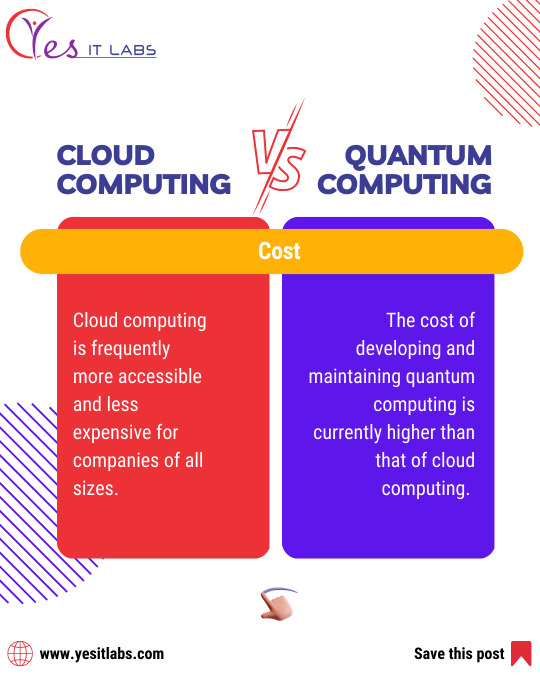
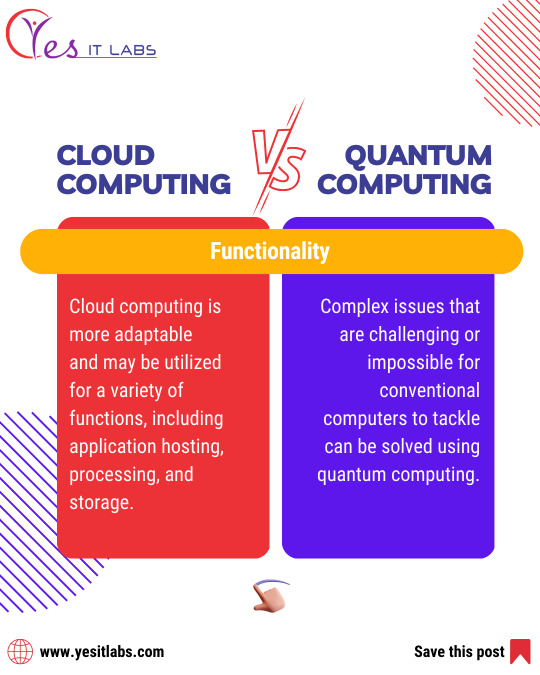
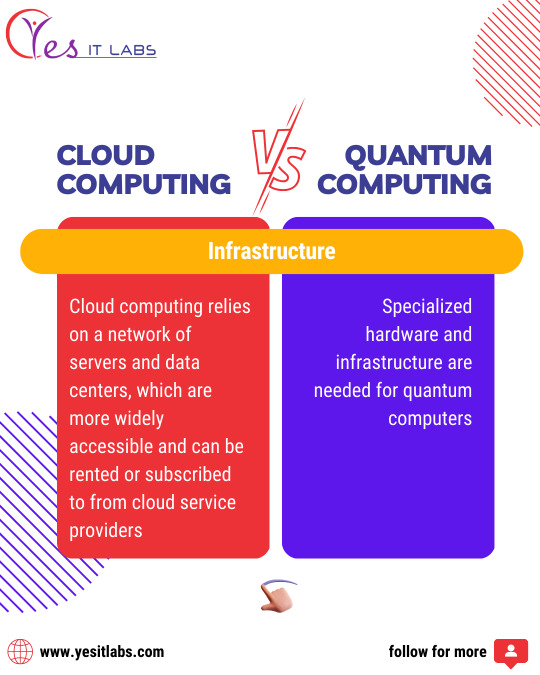
#cloudcomputing#cloudcomputingservices#cloudcomputingsytem#cloudcomputingsolutions#computing#computinghistory#cloudcommunication#cloudcomp#onlinebusinesses#businessessential#businessoperations#smallbusinesses#smallbusinessowners#quantum#quantumcomputing#quantumcomputer#smallbusinessuk#smallbusinessowner#smallbusinessusa#smallbusinessaustralia#supportsmallbusiness#helpsmallbusinesses
0 notes
Photo

Do you know why market interest in Ubiquitous Computing is going down? #computing #cloudcomputing #quantumcomputing #retrocomputing #vintagecomputing #physicalcomputing #computingscience #computingteacher #computinghistory #edgecomputing #supercomputing #cognitivecomputing #spatialcomputing #ncomputing #cloudcomputingservices #8bitcomputing #creativecomputing #mobilecomputing #fogcomputing #computingatschool #astrocomputing #highperformancecomputing #nuscomputing #cloudcomputingsystem #womenincomputing #parallelcomputing #recomputing #computingatsmu #computingpower #embeddedcomputing https://www.instagram.com/p/Bz6IDFgnzyi/?igshid=49l285y11klm
#computing#cloudcomputing#quantumcomputing#retrocomputing#vintagecomputing#physicalcomputing#computingscience#computingteacher#computinghistory#edgecomputing#supercomputing#cognitivecomputing#spatialcomputing#ncomputing#cloudcomputingservices#8bitcomputing#creativecomputing#mobilecomputing#fogcomputing#computingatschool#astrocomputing#highperformancecomputing#nuscomputing#cloudcomputingsystem#womenincomputing#parallelcomputing#recomputing#computingatsmu#computingpower#embeddedcomputing
0 notes
Photo

My Last book "La machine psychanalytique" aux éUD. About history and philosophy of relations between computing and psychology. #psychologie #psychanalyse #psychology #psychoanalysis #informatique #computing #computinghistory #digitalpsychology #digitalphilosophy #psychanalyste #lacan #freud #turing #wiener #cybernetic #eniac #edvac #vonneumann #gametheory #theoriedesjeux https://www.instagram.com/p/ByAFOtjIuYJ/?igshid=d3h64ym2ures
#psychologie#psychanalyse#psychology#psychoanalysis#informatique#computing#computinghistory#digitalpsychology#digitalphilosophy#psychanalyste#lacan#freud#turing#wiener#cybernetic#eniac#edvac#vonneumann#gametheory#theoriedesjeux
1 note
·
View note
Photo

Wooho! Edible Operating Systems! #computer #programminglife #computinghistory #atxeventplanners #atxbakery #austin3dcakes #customcakes #corporatedesign #computer https://www.instagram.com/p/Bsfq5i8lgbZ/?utm_source=ig_tumblr_share&igshid=p3tuhi8in46w
#computer#programminglife#computinghistory#atxeventplanners#atxbakery#austin3dcakes#customcakes#corporatedesign
0 notes